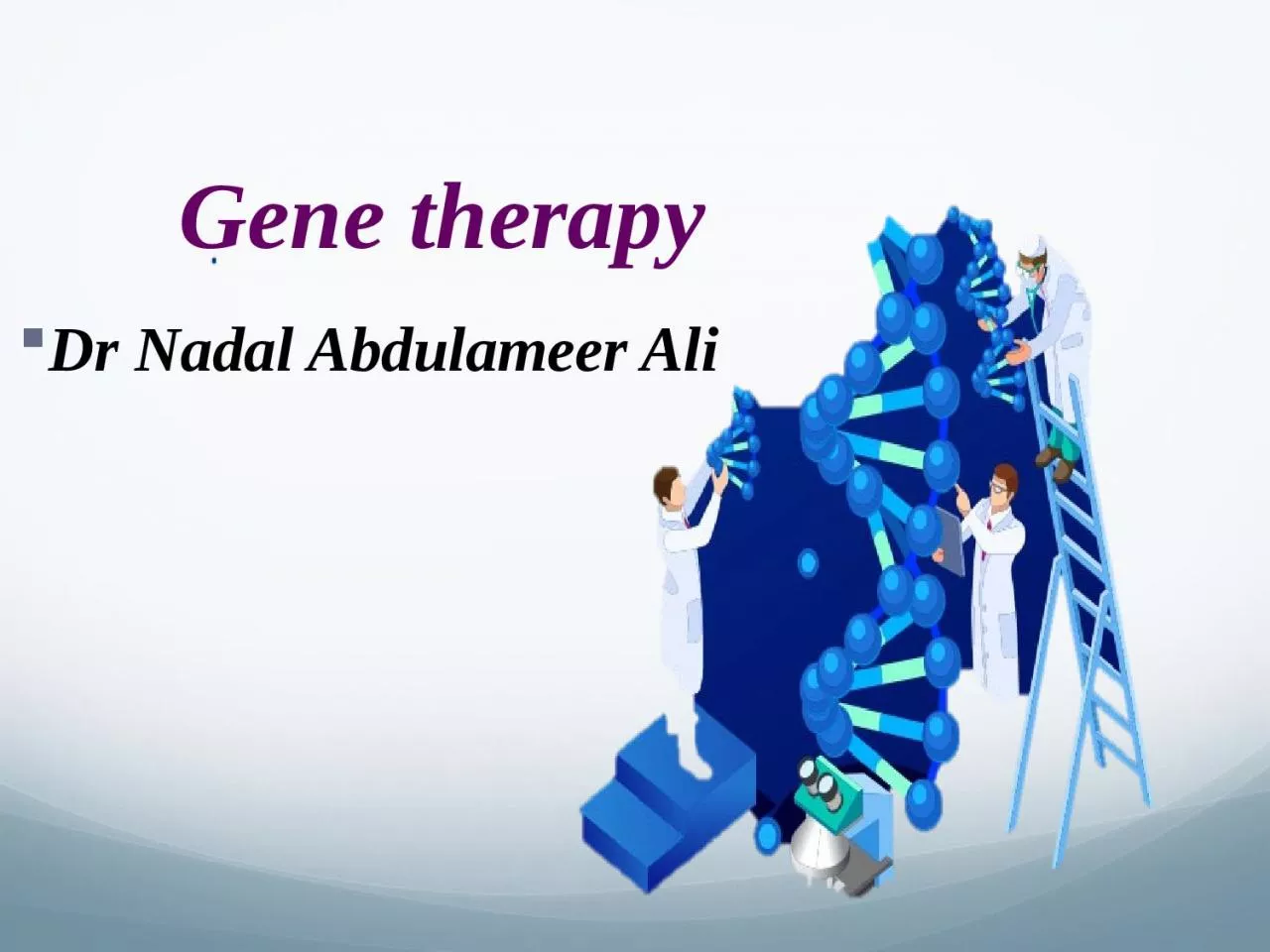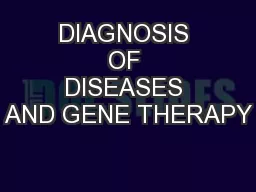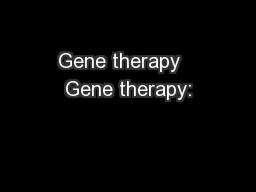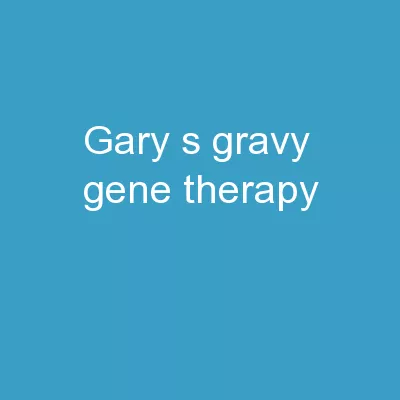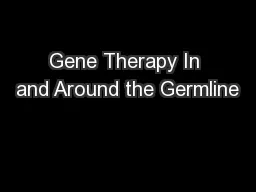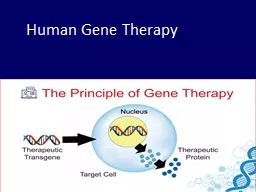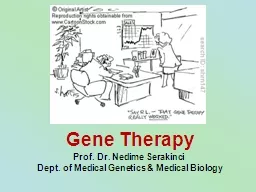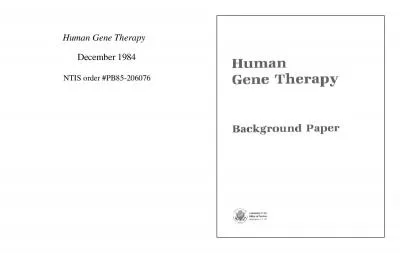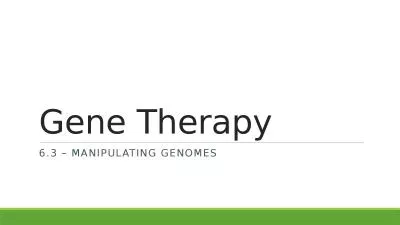PPT-Gene therapy Dr Nadal Abdulameer Ali
Author : elina | Published Date : 2022-06-28
Gene therapy is when DNA is introduced into a patient to treat a genetic disease The new DNA usually contains a functioning gene to correct the effects of a diseasecausing
Presentation Embed Code
Download Presentation
Download Presentation The PPT/PDF document "Gene therapy Dr Nadal Abdulameer Ali" is the property of its rightful owner. Permission is granted to download and print the materials on this website for personal, non-commercial use only, and to display it on your personal computer provided you do not modify the materials and that you retain all copyright notices contained in the materials. By downloading content from our website, you accept the terms of this agreement.
Gene therapy Dr Nadal Abdulameer Ali: Transcript
Download Rules Of Document
"Gene therapy Dr Nadal Abdulameer Ali"The content belongs to its owner. You may download and print it for personal use, without modification, and keep all copyright notices. By downloading, you agree to these terms.
Related Documents

